What Hi-Fi? Verdict
Everything about the A80K feels like the result of a true labour of love – ensuring that you’ll love it too
Pros
- +
Beautifully refined and natural
- +
Excellent sound quality
- +
Elegant minimalistic design
Cons
- -
Not always as bright as expected
- -
Some minor picture inconsistency
- -
HDMI features could be even better
Why you can trust What Hi-Fi?
Given that there are A90K OLED TVs in Sony’s range, you’d be forgiven for thinking that the XR-55A80K represents some sort of step-down, second-tier model. This isn’t really the case, though. The A90K designation is more of a naming quirk reserved for Sony’s smallest 42-inch and 48-inch OLED TV options rather than a sign of truly significant extra features or quality over the A80K range.
In fact, the A80K boasts a seriously premium spec sheet that includes one of the latest brightness-bolstered OLED panels backed up by a heat sink that unlocks even more brightness without increasing the potential for OLED screen burn.
Sony’s ever-impressive Acoustic Surface audio system, which uses the screen itself to generate sound, is also present and correct, while the latest version of Sony’s Cognitive XR processor is on hand to make sure that all of the A80K’s lovely hardware is dedicated to delivering Sony’s vision of the most accurate and/or ‘realistic’ pictures possible.
Is this enough, though, to see the OLED XR-55A80K holding its own in one of 2022’s most competitive TV spaces?
Price
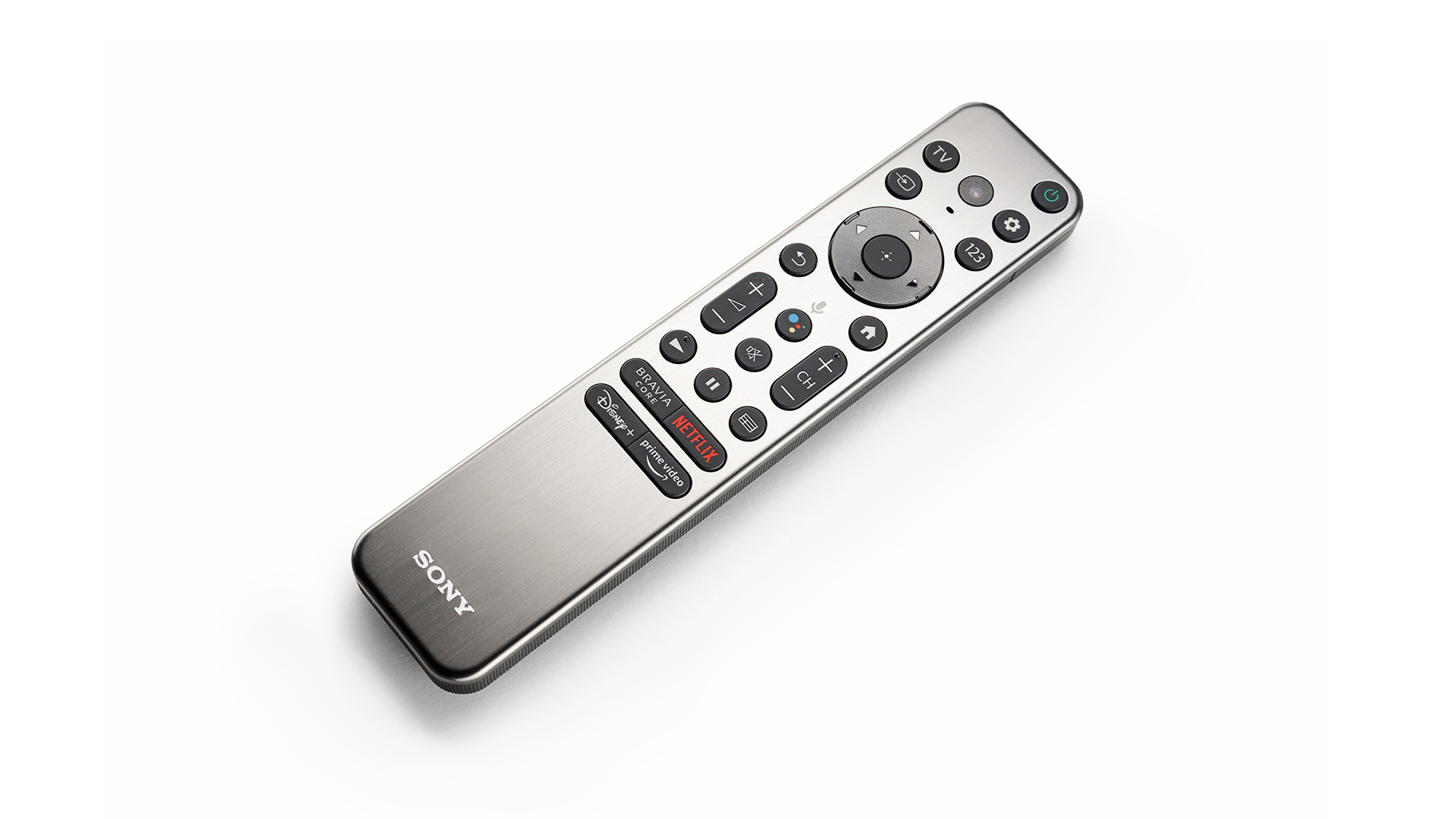
At £1499 / $1300 / AU$2795, the A80K initially looks relatively expensive in the UK by today’s 55-inch OLED standards. LG’s OLED55C2, for instance, is (at the time of writing) available for £1149 / $1300 / AU$2495, while Panasonic’s UK-only TX-55LZ1000B can be yours for £1099.
Neither of those rivals sports a brightness-increasing heat sink element, though. To get one of those you need to step up to LG’s OLED55G2 (£1449 / $1700 / $2950) or Panasonic’s TX-55LZ1500B (£1499), at which point the Sony A80K starts to look much more competitive.
Perhaps the biggest pricing headache for the XR-55A80K (and most ‘standard’ OLED TVs for that matter) is Samsung’s 55-inch S95B which, despite delivering a new high-brightness, wide colour Quantum Dot version of OLED technology, is available for just £1199 / $1450 / AU$3495.
The latest hi-fi, home cinema and tech news, reviews, buying advice and deals, direct to your inbox.
In the UK, there’s a variant of the A80K called the A84K. This variant (XR-55A84K to give it its full title) is available through a very limited number of retailers, most notably Currys. While largely identical to its more widely available sister model, the A84K boasts a number of little upgrades, including a metal (rather than plastic) remote, a built-in far-field microphone for remote-free voice control, and a Rich Colour Enhancer feature that delivers marginally more potent colour tones, but only when the set is in its largely best avoided Vivid picture preset. It also comes with twice as many tokens to spend on movies in Sony’s Bravia Core streaming service, and this might actually be the most compelling reason to seek out the A84K over the A80K, particularly as both sets are usually available for exactly the same price.
Design

Sony tends to favour minimalism with its TV designs, a trend that continues with the A80K. From the front it’s basically just a nearly bezel-free rectangle sat on simple, narrow, silver ‘skate blade’ feet that do their level best not to draw your eye away from the pictures you’re watching.
The feet can be positioned either wide, under each of the screen’s corners, or closer together so the TV can sit on narrower pieces of furniture, and they can also be attached so that the screen either sits right down low on them or raised 2-3 inches so that you’ve got room to tuck a soundbar into.
The screen is strikingly slim around the back at its outer extremities, but there’s a relatively chunky section sticking out from the centre of the XR-55A80K’s rear that plays host to the screen’s drivers and processing, as well as housing elements of a startlingly powerful Acoustic Surface+ audio system that we’ll detail later.
Accompanying the A80K is one of Sony’s new remote control designs, complete with more ergonomic button design.
Features
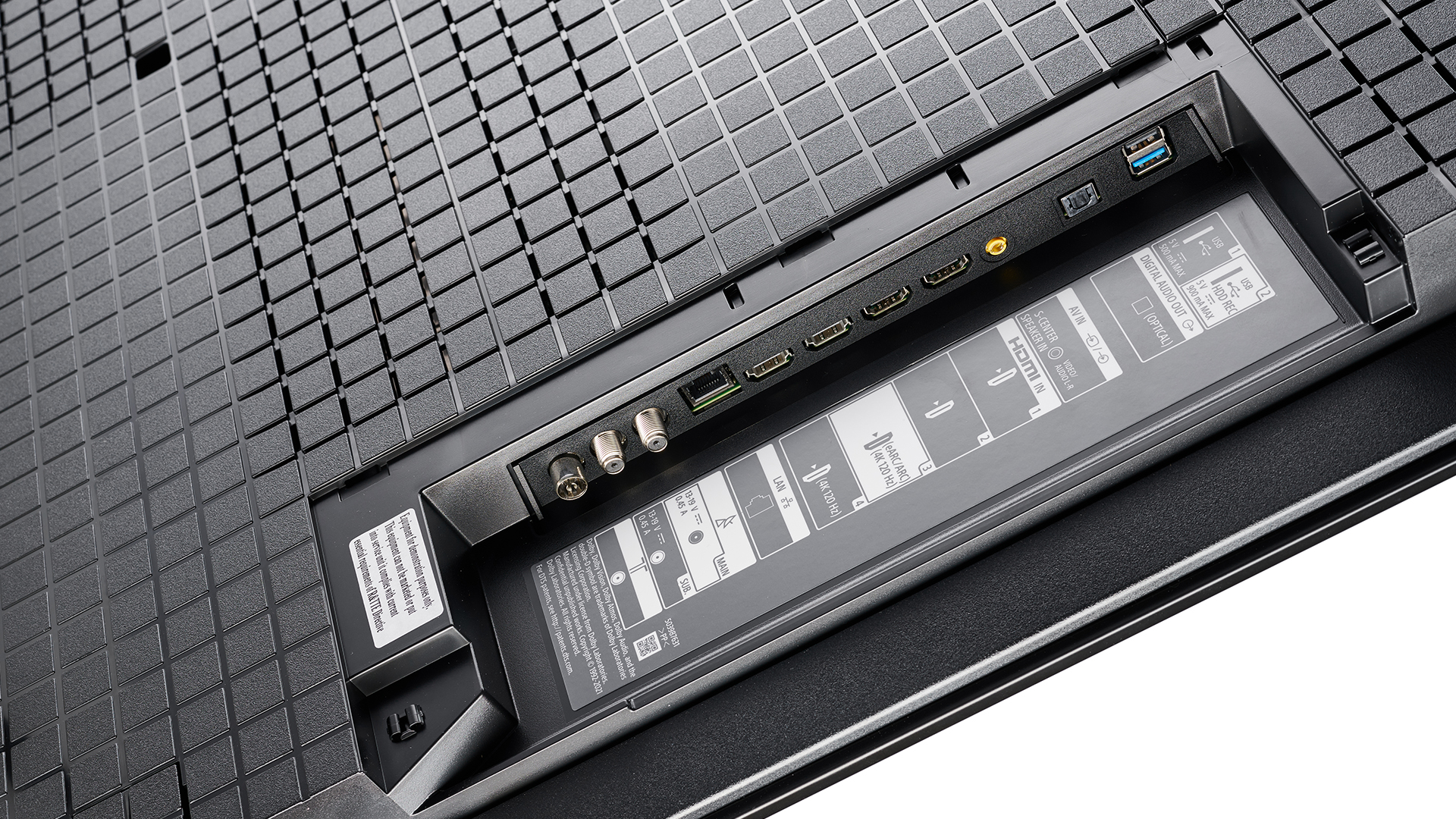
The Sony XR-55A80K’s use of an OLED panel means that every pixel in its screen produces its own light, independent of its neighbours. So we can look forward to levels of local contrast and dark scene consistency that you just can’t get with any LED solution to date.
This local contrast, as well as the TV’s full-screen brightness, should be bolstered by the A80K’s use of one of the latest higher-brightness OLED panels to emerge from the LG Display OLED production lines, and by the addition of a heat sink element so that the screen can push even brighter without any increased risk from permanent image retention issues.
As mentioned earlier, the XR-55A80K’s sound is delivered by Acoustic Surface Audio+ technology, where actuators vibrate the screen to produce the bulk of the TV’s audio. Three actuators are used (left, right and centre) rather than the two found in OLED TVs further down Sony’s 2022 range, and these are backed up by two subwoofers to boost the bass performance, and two further actuators on the screen’s sides to improve high frequency sounds and dialogue playback.
Dolby Atmos decoding is provided to give this speaker system an object-based audio format to sink its teeth into, and the A80K even carries a connector that lets it be used as the centre speaker in a separates sound system.
The A80K’s premium hardware is driven by Sony’s latest Cognitive XR processor, with its focus on subtly manipulating every element of picture quality to create a more natural image that resembles more closely the way your eyes perceive the real world. This includes, for instance, detecting the main focus of an image and subtly enhancing that focus for more emphasis.
Looking at more specific innovations, Sony’s XR Contrast feature uses advanced power management to boost colour and contrast in bright areas of the picture without spoiling black levels. It also uses a temperature sensor to detect and accurately control light so that pixels in bright areas are all illuminated simultaneously for a more consistent and punchy effect.
Sony’s Triluminos colour technology, meanwhile, works with the Cognitive Processor XR to deliver both a wider, more finely graded and more natural colour range, and XR Clarity draws on a vast database of picture knowledge to deliver enhanced upscaling of sub-4K sources. Plus, of course, there’s the usual suite of motion processing options for which Sony is justly famed.
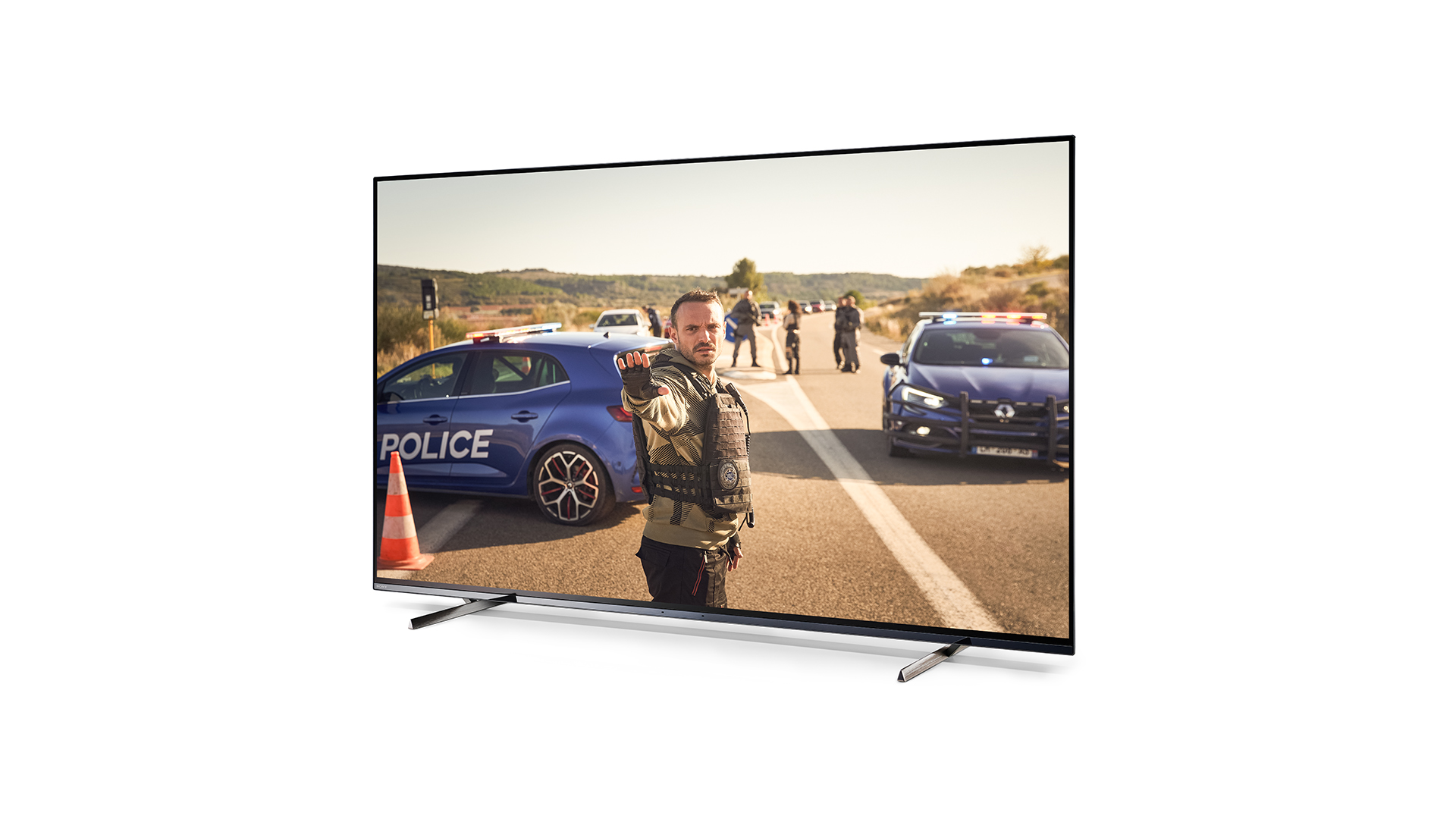
Screen size 55 inches (also available in 65in, 77in)
Type OLED
Resolution 4K
HDR Formats HLG, HDR10, Dolby Vision
Operating system Google TV
HDMI inputs x4
HDMI 2.1 48Gbps, x2
Gaming features 4K/120Hz, VRR, ALLM
ARC/eARC eARC
Optical output? Yes
Dimensions (HWD, without stand) 71 x 123 x 5.3cm
The A80K’s connections are good enough without being as good as we’d like. By which we mean that while it has four HDMIs, only two of those are capable of handling the 4K/120Hz and VRR features Xbox Series X and PS5 owners are looking for these days. One of those two 4K/120Hz-capable HDMIs also has to double up as the TV’s eARC port.
It’s a bit frustrating, too, that you have to manually select the correct setting for the 4K/120Hz ports from four available options in the A80K’s rather convoluted onscreen menus, and that your choices see you having to pick between a setting that’s compatible with Dolby Vision HDR and a setting that’s compatible with 4K/120Hz and VRR. You can probably guess from this that while it is possible to game in Dolby Vision at 4K, you can’t do so beyond 60Hz. Worse (and separate to the HDMI setting jiggery-pokery outlined) there’s no dedicated Dolby Vision game mode, and that means input lag is unacceptably high.
Avoid Dolby Vision and select the Game preset and the A80K’s input lag is a very (though not class-leadingly) low 16.6ms with 60Hz sources. That figure should more or less halve if you up the frame rate to 120Hz.
Despite the Cognitive Processor XR’s penchant for tweaking pictures so that they look more ‘real world’, the A80K is also keen on maintaining creative intent. This is particularly obvious in its support for the IMAX Enhanced, Netflix Calibrated and Dolby Vision HDR formats, all of which require certification from the three organisations involved before Sony can include them.
The HDR support also includes HDR10 and HLG, though as always with Sony TVs, there’s no support for the HDR10+ system. While it’s a shame Sony won’t support this given that Philips and Panasonic now support it alongside the other three key HDR formats, it’s true to say that there’s much more Dolby Vision content in the wild than there is HDR10+.
The XR-55A80K’s smart features are delivered by Google TV. This is an improvement in terms of both structure and presentation over its Android TV predecessor, and it runs stably enough on the A80K. Most of the really big streaming apps are present and correct now, and Sony has added YouView to make sure that Google TV’s blind spot regarding some of the UK’s main terrestrial catch-up services isn’t a problem here. There are still a few frustrating limitations when it comes to how comprehensively some of the platform’s key apps integrate into aspects of Google TV’s content recommendation features, though.
As usual with premium Sony TVs, the A80K supports Sony’s Bravia Core streaming service, which can deliver films and TV shows in high video quality using bit rates as high as 80Mbps. Bravia Core carries a number of IMAX Enhanced titles, and buying an A80K qualifies you for 24 months of unlimited Bravia Core streaming and 10 free premium movie releases.
Basing its smart OS on Google TV means the A80K supports Chromecast out of the box, as well as the Google Assistant voice recognition system.
One last feature of the A80K worth covering is its support for Sony’s Bravia CAM. As well as obvious stuff such as video calls, this detachable, optional extra camera unlocks gesture control support and ‘Ambient Optimisation Pro’ technology that figures out where you’re watching the TV from in the room and adjusts the picture and sound accordingly to give you the best experience.
Picture

The combination of Sony’s Cognitive Processor XR and a high-end, brightness-enhanced panel proves to be another match made in Sony OLED heaven.
Pictures are typically exquisite, for want of a better word. The sheer level of control and nuance in everything from the balance of light between each and every pixel to the seemingly limitless cache of colour tones and the clean, pure reproduction of every last detail and texture results in pictures that feel both objectively accurate and subjectively beautiful. So much so that for the first couple of movies you watch on the A80K you may actually find it hard to concentrate on the narrative because you’re so busy drooling over the picture quality.
After the initial (happy) shock, though, you start to enjoy the exact opposite experience, whereby the typically immaculate picture immerses you in what you’re watching so thoroughly that you forget about the screen technology behind it. Which in the end is what a great TV should be all about.
We’ve often found that the very best TVs produce pictures that enjoy an almost indefinable extra sheen of quality; something about them that makes them look like they’re giving you that bit more in so many different picture areas that it’s hard to pick out the individual elements responsible for the spectacle you’re enjoying. The A80K has this quality in spades – giving you a real insight into how successfully the Cognitive Processor XR extends its interconnected tendrils into so many facets of picture quality.
The A80K’s precision and Sony’s understanding of what makes picture quality tick helps to create one of the most three-dimensional images we’ve seen on a 2D TV, while the abilities of the high brightness heat sink OLED panel can clearly be felt during bright scenes such as Mad Max: Fury Road’s epic desert battles as they maintain a full-screen level of luminance you don’t get even with the most talented non-heat-sink enhanced OLED TVs (such as the brilliant Panasonic TX-55LZ980).
Direct comparisons between the A80K, Panasonic LZ980 and Sony’s new A95K QD-OLED TV prove particularly useful in coming to judgment on Sony’s OLED mid-ranger, in fact. Against the Panasonic set, the Sony fluctuates scene by scene (almost shot by shot at times) during a typical movie between looking slightly brighter, more colourful and richer than the Panasonic where a shot is mostly bright, and actually looking a little duller and flatter during mostly dark shots.
The Panasonic’s black levels look a touch deeper with very dark scenes too, yet at the same time manage to hold on to shadow detail slightly better, whereas there can be a touch of black crush in the very darkest corners of some pictures on the Sony.
The Sony’s performance varies more than the Panasonic’s, both between different presets and in the way the two TVs’ processing responds to the content being received. As one final example of this, while the Sony A80K typically looks brighter with light HDR content in its Standard mode than the LZ980, in the two models’ Cinema presets the Panasonic actually looks slightly brighter, despite not having a heat sink.
What all this boils down to is a sense that the A80K’s processing is working more aggressively to optimise its pictures for different content or different viewer proclivities (based on chosen presets). While this sometimes means the Sony looks more dynamic and impressive, though, at other times (usually with dark scenes) the steadier, more consistent Panasonic looks better. Which of these approaches – dynamic versus stable and consistent – suits you best is to some extent a matter of taste, though the extent to which the Sony’s pictures can change from scene to scene can occasionally be a little distracting.
Compared with Sony’s A95K and the Samsung S95B, the A80K clearly doesn’t have the much more expensive QD-OLED models’ colour purity, at least in bright areas, and nor does it achieve the same level of brightness for either full-screen HDR brightness or peak HDR highlights. In fact, the QD-OLED models reinforce the impression that with some settings and dark content the A80K runs a little less brightly than other OLED TVs that sport similar panel technology.
While such comparisons are useful for highlighting the A80K’s unique way of doing things, though, and the occasional compromise that accompanies that, they do nothing to dispel our instant and lasting impression that Sony’s latest OLED TV’s pictures are, for the vast majority of the time, things of true, ultra-refined beauty.
Sound
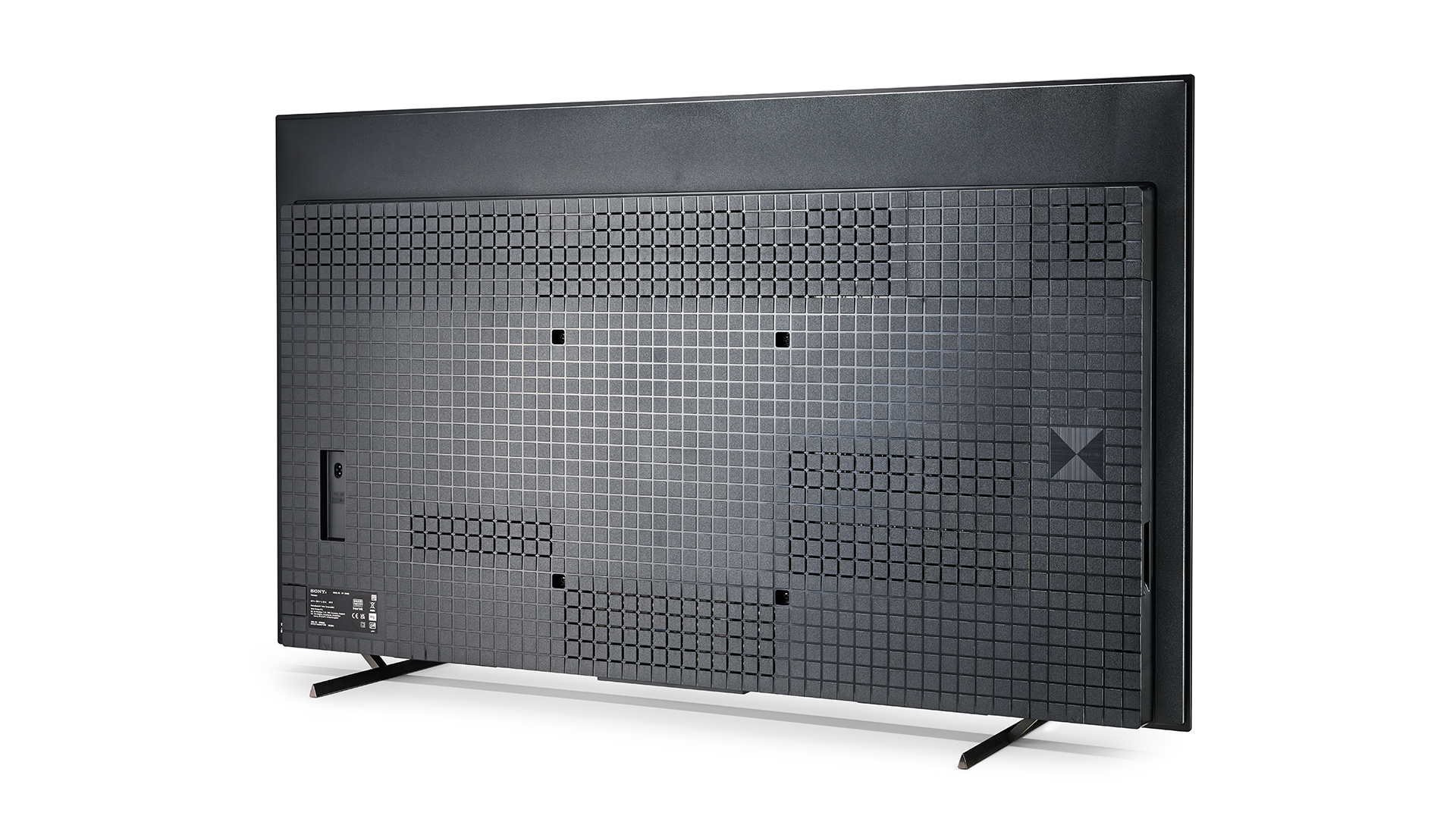
The A80K continues to prove just how effective Sony’s Acoustic Surface Technology can be. The fact that its sound projects directly forward rather than emerging from down- or side-firing speakers immediately gives it more impact and makes it seem more directly connected with the onscreen action.
It builds on this latter strength, too, with the remarkably accurate way it manages to place effects on the screen. If a car crosses the screen, either left to right or from top to bottom, the sound it makes tracks its movements with exceptional precision. Apply this placement effect across multiple different objects in the same picture and add both the extra accuracy created by using three actuators behind the screen and the impact of the sound emerging directly forward from the screen, and you end up with a fantastically busy, room-filling and cinematic sound stage that’s all the more gratifying given that it’s coming from such a minimalistic-looking TV design.
The A80K also benefits from the lovely, open mid-range we always hear with Sony’s Acoustic Surface approach. This means dialogue sounds richer and better contextualised; trebly effects avoid sounding harsh or clipped; and dense soundtracks have plenty of headroom to expand when needed. The wide mid-range also helps the impressive amounts of bass delivered by the subwoofers feel like a convincing extension of the main speakers’ dynamic range, rather than baggy or detached. It handles all but the most extreme and sustained movie bass rumbles without sounding boxed in or distorted, too.
While the A80K’s sound doesn’t spread as far left or right or up and down as a few other high-end TVs do, the unusually forward nature of its sound and the accuracy of its onscreen effects placement provides ample compensation for this width limitation.
Verdict
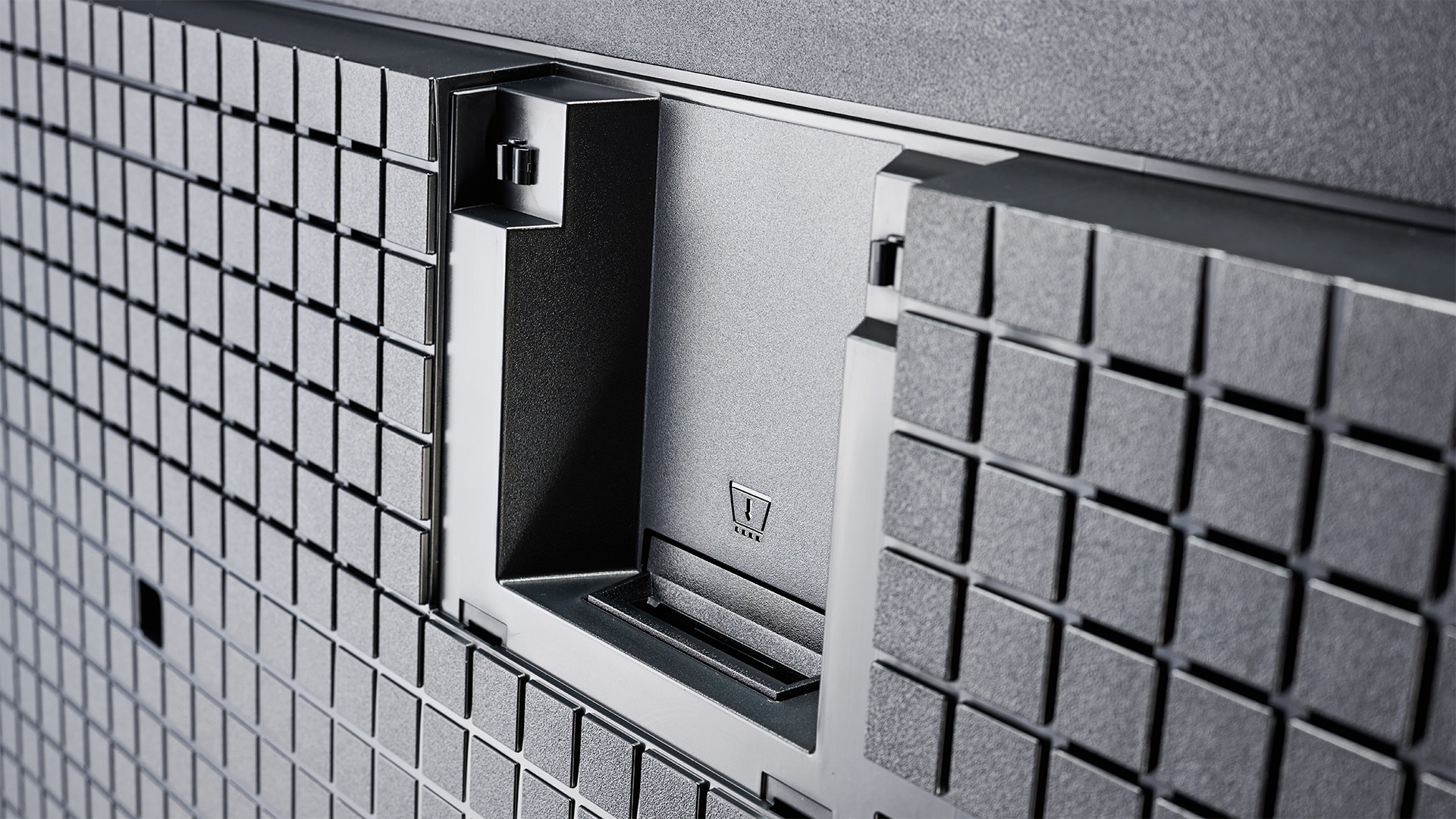
The A80K’s pictures aren’t quite as bright as we might have expected, and it’s a little more enthusiastic with its image optimisation systems than some hardcore AV enthusiasts might like. However, harnessing the innate hardware charms of a high brightness, latest-gen OLED panel to the beautifully natural-looking and immersive results of Sony’s Cognitive XR processor still ends up delivering some of the most subjectively beautiful pictures we’ve ever seen. All accompanied by an audio system that’s as satisfying to listen to as it is innovative.
SCORES
- Picture 5
- Sound 5
- Features 4
MORE:
Read our review of the LG OLED65C2
Also consider the LG OLED65G2
Read our Panasonic TX-55LZ980B review
See what we thought of the Samsung QE55S95B
Best TVs: brilliant budget to premium 4K Ultra HD TVs
John Archer has written about TVs, projectors and other AV gear for, terrifyingly, nearly 30 years. Having started out with a brief but fun stint at Amiga Action magazine and then another brief, rather less fun stint working for Hansard in the Houses Of Parliament, he finally got into writing about AV kit properly at What Video and Home Cinema Choice magazines, eventually becoming Deputy Editor at the latter, before going freelance. As a freelancer John has covered AV technology for just about every tech magazine and website going, including Forbes, T3, TechRadar and Trusted Reviews. When not testing AV gear, John can usually be found gaming far more than is healthy for a middle-aged man, or at the gym trying and failing to make up for the amount of time he spends staring at screens.
